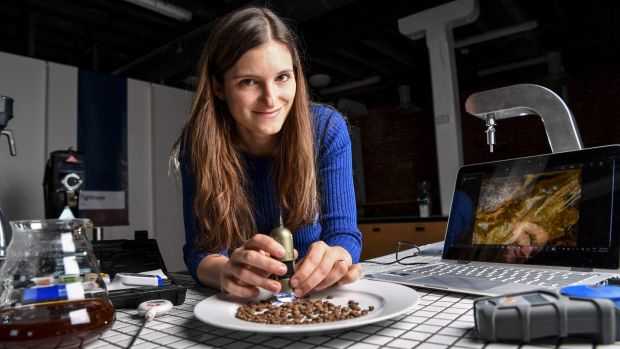With a PhD in chemistry from Monash University and a research background in the electrolysis of water, Dr Monika Fekete might have been expected to keep working on the quest to make hydrogen for fuel cells.
Instead, she became fascinated with another very human fuel source: coffee.
In March she left her academic job and set up the Australian Coffee Science Lab, Australia’s first independent scientific coffee consultancy.
The Hungarian-born Dr Fekete came to Monash in 2010 and liked Melbourne so much she decided to stay. She also fell in love with the city’s intense coffee culture, and that’s what has spurred her to go out on her own.
“It’s the combination of two passions,” she says. “When I was in Hungary, coffee was just something you’d drink to keep awake for an exam or to socialise with your friends. But since I came to Australia I have learned to appreciate all the effort that goes into coffee. Roasters and baristas here really care about quality.
“At the same time I noticed that while other industries take advantage of a scientific approach, this hasn’t happened in the coffee industry yet.”
Her lab is a mobile affair – a hand-held coffee refractometer that she uses to measure extraction and help baristas hit the flavour “sweet spot” consistently; a PH meter that can detect lime scale build-up in a cafe’s coffee machine; and a USB microscope for examining coffee beans and coffee grounds.
But much of her work is about data analysis rather than expensive equipment.
Damien Steponavicius, head roaster at Five Senses Coffee, has worked with Dr Fekete on coffee roasting.
“We’re not scientists, it’s more craft,” Mr Steponavicius says. “Monika is providing us with scientific tools to better understand the relationship between roast profiles and results in the cup. It’s almost unheard of in Australia, a scientist coming in to analyse our data.”
Devin Loong from Slater Street Bench worked on grind particle size with Dr Fekete before competing in the World Brewers Cup in Dublin in June.
“We found the best particle size was between 450 and 800 microns,” he says. “So it was about finding the grinder setting that gave us the most particles in that window.”
“I’m an engineer by training but I’m not very scientific in my approach. Monika has the know-how to do more systematic experiments and to remove variables,” he says.
She’s travelling to Turin in Italy to spend a week in the Lavazza coffee research lab. “They are so particular about absolutely everything. They test not just the grind size distribution but also the composition, caffeine levels, residues of microbial toxins and pesticides.”
She’s also developing industry collaborations with Monash and La Trobe universities.
“Science is very good at finding cause and effect,” Dr Fekete says. “You make a perfect cup or a perfect roast, but it’s a bit of luck, a matter of trial and error. By doing coffee science, we’re taking some of the guesswork and mystery out of making good coffee.”


















